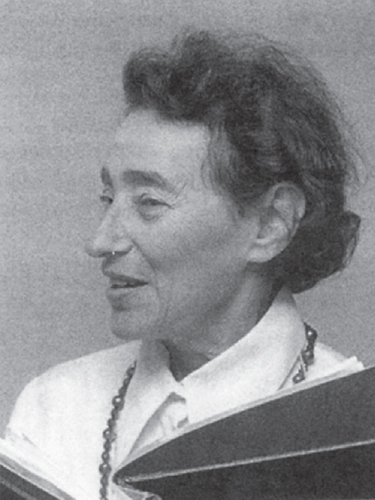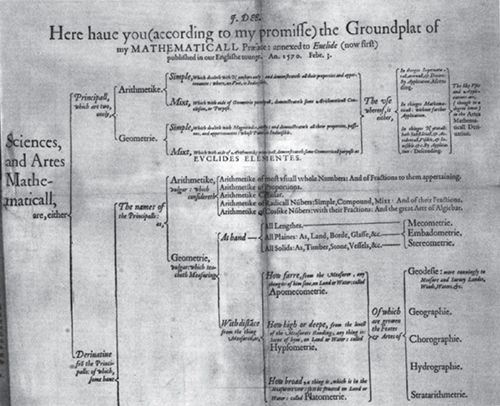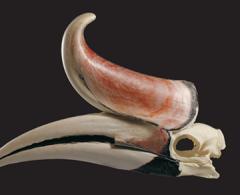
This Article From Issue
March-April 2013
Volume 101, Number 2
Page 151
DOI: 10.1511/2013.101.151
COMPLEXITIES: Women in Mathematics. Edited by Bettye Anne Case and Anne M. Leggett. xx + 412 pp. Princeton University Press, 2005. $52.50.
A WEALTH OF NUMBERS: An Anthology of 500 Years of Popular Mathematics Writing. Edited by Benjamin Wardhaugh. xviii + 370 pp. Princeton University Press, 2012. $45.
Bettye Anne Case and Anne M. Leggett’s Complexities: Women in Mathematics and Benjamin Wardhaugh’s A Wealth of Numbers: An Anthology of 500 Years of Popular Mathematics Writing are complementary compilations of essays on the history of mathematics. Complexities presents papers by women mathematicians along with reflections on the history and future of women in mathematics, and A Wealth of Numbers brings together mathematical essays from a wide range of popular sources. Although the two collections approach the history of mathematics from very different perspectives, each offers a strong sense of that history, and the volumes complement one another.

From Complexities.
Look into the calculus classrooms of the school where I teach, and you’ll find that more than half of the students are young women. In 2005, according to the National Science Foundation’s Survey of Doctoral Recipients, over 29 percent of tenure-track faculty in mathematics and statistics were women. Yet many of us still find this increase in the number of women in tenure-track positions counter to our expectations.
Much remains to be done in reducing gender-based inequities, particularly in academia, but it is impossible to ignore how recently and swiftly women’s participation in mathematics has increased. In her essay, “American Women in Mathematics’s First Twenty Years,” Lenore Blum recalls a joke she was told at a party she attended at MIT as a grad student in the sixties: “There have been only two women mathematicians in the history of mathematics. One wasn’t a woman and one wasn’t a mathematician.” She notes parenthetically, “It may not be so surprising that in those years we were often accused of not having a sense of humor.”
Complexities, which includes Blum’s essay along with many others, is an antidote to the myth that joke expresses. Case and Leggett, the editors, have gathered essays from more than 70 authors, grouping them into five sections. The first part, “Inspiration,” contains short biographical pieces about mathematicians from the 19th and early to mid-20th century. Many of these are written by the mathematicians’ family members or students, so the portrayals offer a sense of intimacy as well as primary source material. The second section, “Joining Together,” traces the development of the Association for Women in Mathematics from the 1970s to the 1990s. The essays in “Choices and Challenges” reflect on women mathematicians both inside and outside the academy, as well as accommodations they do and don’t make for spouses and children. “Celebration” includes mathematical articles along with papers that intertwine mathematical and biographical strands. In the final section of the book, “Into a New Century,” a number of younger mathematicians reflect on both mathematics as a career and the future of women in mathematics.
Among the book’s many highlights is the essay “Being Julia Robinson’s Sister,” by Constance Reid, the author of a number of books on mathematics, including Julia: A Life in Mathematics and Hilbert. Reid made a career of writing about mathematics, largely due to her sister’s encouragement. She notes, “Julia thought of mathematicians . . . ‘as forming a nation of our own without distinctions of geographical origins, race, creed, sex, age, or even time (the mathematicians of the past and you of the future are our colleagues too)—all dedicated to the most beautiful of the arts and sciences.” The essay demonstrates the importance of informal connections and mentoring to success in the field.
In her essay on Sophie Germain, Mary W. Gray does a masterful job of integrating the story of Germain’s life with that of her mathematical discoveries, in terms that are accessible to general readers. Germain’s father tried to forbid her from studying mathematics, so she taught it to herself, hiding the candles she needed to read her books. Despite this difficult beginning, she worked at the intersection of mathematics and physics. One of her papers was used by Leonard Dickson 80 years later to prove one case of Fermat’s last theorem. We learn also that Germain’s work in philosophy influenced Auguste Comte.
A number of essays in the book describe the lives of black women mathematicians, such as Evelyn Boyd Granville, Marjorie Lee Browne, Vivienne Malone-Mayes and Geraldine Darden. Darden’s essay, “How I Decided to Pursue a Ph.D. in Mathematics,” emphasizes the role that mentorship plays in the lives of untraditional mathematics graduate students. When she met Browne at a summer institute aimed at teachers, Darden relates, Browne’s first comment was “Why aren’t you in graduate school?” Later she was encouraged by Arthur Sagle to go for a Ph.D. rather than a master’s degree. Darden concludes with an injunction to teachers at all levels: “Please do not make prejudgments. We don’t see many minority students in science or mathematics; if you see a good student, please encourage that student. If you do for them as Browne, Talbot, and Sagle did for me, I think you will see many more black women in mathematics.” Like many of the essays in Complexities Darden’s talk was written with the purpose of encouraging more women, in this case black women in particular, to enter the field of mathematics.
Several essays consider the life and work of Olga Taussky-Todd. In many ways her life was emblematic of mid-20th-century women mathematicians: She was trained in Europe and spent her career in Great Britain and the United States, where she taught at Bryn Mawr. Her work is referenced in several mathematical papers in the book, including one on class field theory and another on matrix theory. These papers will likely only be accessible to mathematical readers, but the essays on her life and the mathematicians she influenced are accessible to the general reader.
Fern Y. Hunt’s paper, “A Mathematician at NIST [the National Institute of Standards and Technology] Today,” stands out for its clarity in explaining a practical application of mathematics. Diane Lambert provides a readable account of a current application of mathematics in her essay, “What Use Is Statistics for Massive Data?”
The strength of Complexities lies in the granular level of its mostly short presentations. Readers interested in more in-depth portrayals might look to Claudia Henrion’s Women in Mathematics: The Addition of Difference (Indiana University Press, 1997), in which she interviews nine women mathematicians active in the late 20th century and, in the process, refers back to a number of historic figures.
Although its episodic nature does not encourage continuous reading, Complexities is a good starting point for student research and a useful resource for professors and teachers of mathematics, who will find plenty of historical mathematics and biographical material to enrich their courses. Readers of women’s history will find plenty of interest in the book as well.
Wardhaugh’s A Wealth of Numbers is a compendium of historical popular math problems, puzzles and essays on topics including algebra, geometry, number theory, physics and astronomy. Many of the writers included sought to appeal to the ordinary, educated reader, with titles like “Dodging the Mastodon and the Plesiosaurus,” “Newton for the Ladies,” “A Mother Explains Comets” and “Einstein’s Real Achievement.” The essays span the 1500s to the 1990s, with one entry from 1481 and a good sampling from the mid-16th to the mid-20th century; Wardhaugh prefaces each one with a brief introduction that contextualizes it and suggests its significance to the field.
Some of these pieces seem to have been written to help readers move from being students or appreciators of mathematics to being users of mathematics and participants in mathematical enterprise. Take the Athenian Mercury, a weekly newspaper that ran from 1691 to 1697, which Wardhaugh refers to as “a kind of seventeenth-century quiz show.” The excerpts from it are written in a question-and-answer format. One of these explains how to solve an algebra problem of three equations and three unknowns: “Now it remains to destroy all the unknown Terms but one. Subtract the second Equation out of the first to destroy z. . . .” One of the pleasures of this book is reading the texts in the language of the day. No current math text I know of refers to combining equations as a form of destruction.

From A Wealth of Numbers.
The book contains a number of classic essays, such as Charles Hutton’s 1796 essay on mathematical history, “It Must Have Commenced with Mankind.” Of it, Wardhaugh writes, “The section chosen here illustrates a thematic rather than a biographical approach to mathematical history and gives a hint of the range of Hutton’s learning. It may be compared with the other speculations in this volume, by Joseph Fenn and by Edmund Scarburgh, on the origins of algebra and geometry.” The collection as a whole provides the general reader with a history of mathematics, biographical and otherwise, through popular writing. Because the writing was aimed at general readers of its time, it is usually accessible to the average mathematical reader of our time. The book would be an excellent reference for teachers of mathematics and for those researching the history of the dissemination of mathematical ideas.
Together, A Wealth of Numbers and Complexities give the reader a better sense of the history of mathematics, as well as a deeper understanding of the connection between popular mathematics and the development of mathematicians.
Carol Dorf is a high school mathematics teacher. She serves as poetry editor of Talking Writing, for which she has curated a series of features on math poetry. Her poetry is available in the Journal of Humanistic Mathematics, Antiphon, Beltway, qarrtsiluni, Spillway, and elsewhere.

American Scientist Comments and Discussion
To discuss our articles or comment on them, please share them and tag American Scientist on social media platforms. Here are links to our profiles on Twitter, Facebook, and LinkedIn.
If we re-share your post, we will moderate comments/discussion following our comments policy.